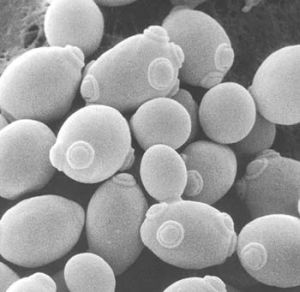|
|
|
|
|
|||
|
|
|
|
| Introduction |
In any given ecosystem, there are organisms working mutually to survive and
thrive. One of the most important types of organisms in the forest
ecosystem is fungi, in all its various forms. It carries out the
decomposition of decaying materials, and helps colonizeplant roots into the soil.
 Without
these small helpers, the soil and the whole ecosystem would not work to its
maximum efficiency. In order for the fungi to do their job, a number of
nutrients is needed within the soil so that the fungi can carry out its
functions accordingly. Fungi and bacteria function through a process
called anaerobiosis, which is cellular respiration without molecular
oxygen. Because there is no oxygen, the fungi needs nutrients such as
chloride, magnesium, sulfate, and many others to be able to work efficiently
in doing the various jobs that they have in the ecosystem. However, in one
of the microclimates that was studied, the yeast population was extremely high
and the sulfate levels were abnormally low.
Without
these small helpers, the soil and the whole ecosystem would not work to its
maximum efficiency. In order for the fungi to do their job, a number of
nutrients is needed within the soil so that the fungi can carry out its
functions accordingly. Fungi and bacteria function through a process
called anaerobiosis, which is cellular respiration without molecular
oxygen. Because there is no oxygen, the fungi needs nutrients such as
chloride, magnesium, sulfate, and many others to be able to work efficiently
in doing the various jobs that they have in the ecosystem. However, in one
of the microclimates that was studied, the yeast population was extremely high
and the sulfate levels were abnormally low.
| We want to know why! Don't you? | |
|
Yeast
is a form of fungi that puts itself into a chemical barrier to protect
the cell membrane when it is in an uncomfortable environment and does
not feel able to develop into mold and

survive. It is very abnormal to see a
large number of this uncomfortable organism, especially in a place
lacking a key nutrirent for the fungi to survive, much less survive
enough to want to stay in its protected state. Our hypothesis is
that we happened to study the microclimate when the sulfate had been
used almost to the fullest by a type of yeast that was able to thrive in
the yeast state, and if it is correct, we will observe a high
number in the yeast to mold ratio (favoring the yeast) when
sulfate is added to the soil. We will take you
through how to conduct an experiment in order to test our hypothesis and
the important things you should know during and after the testing.
|
|